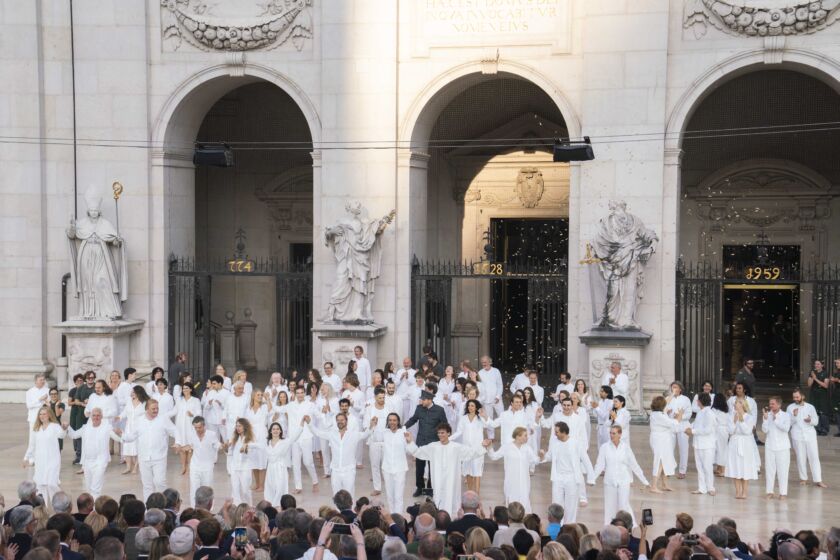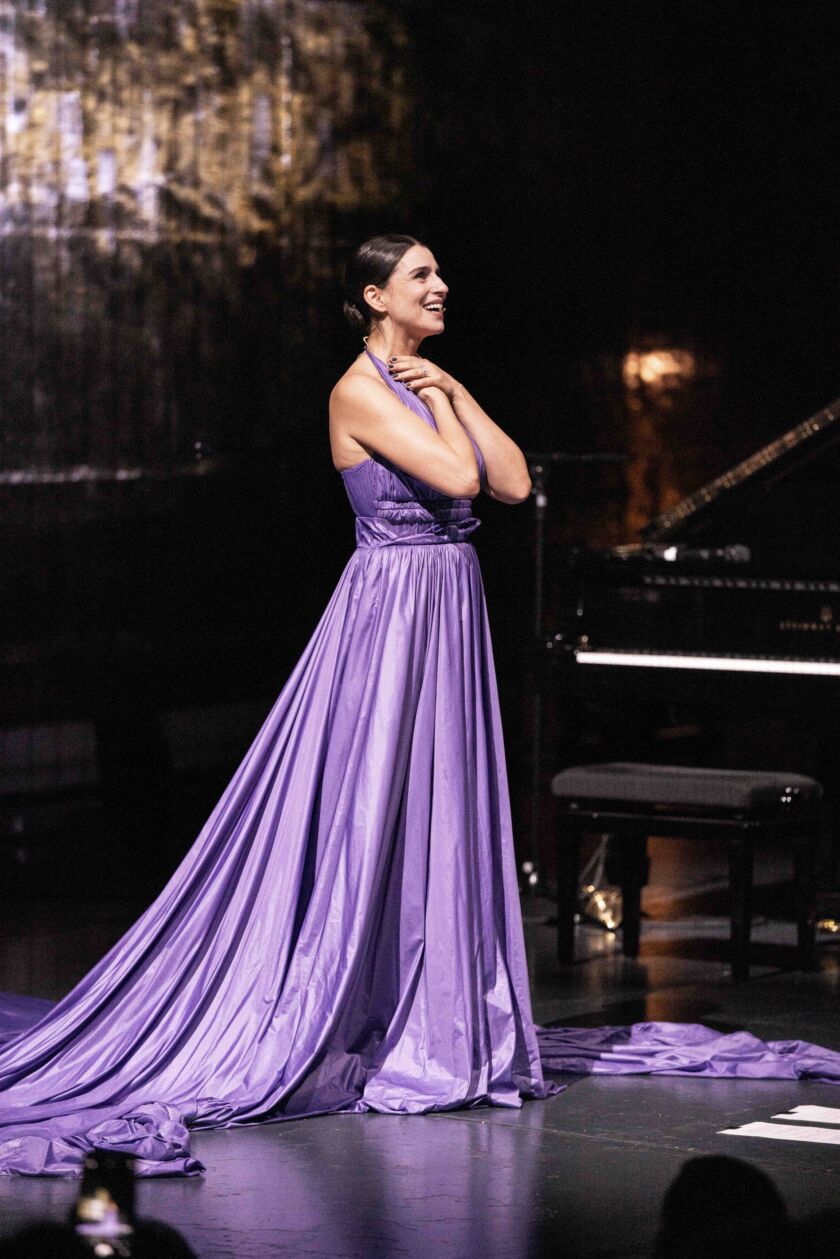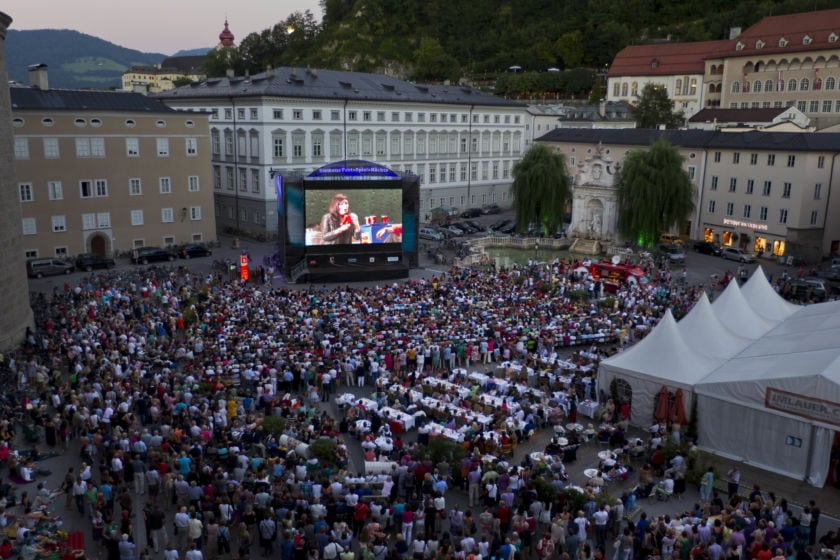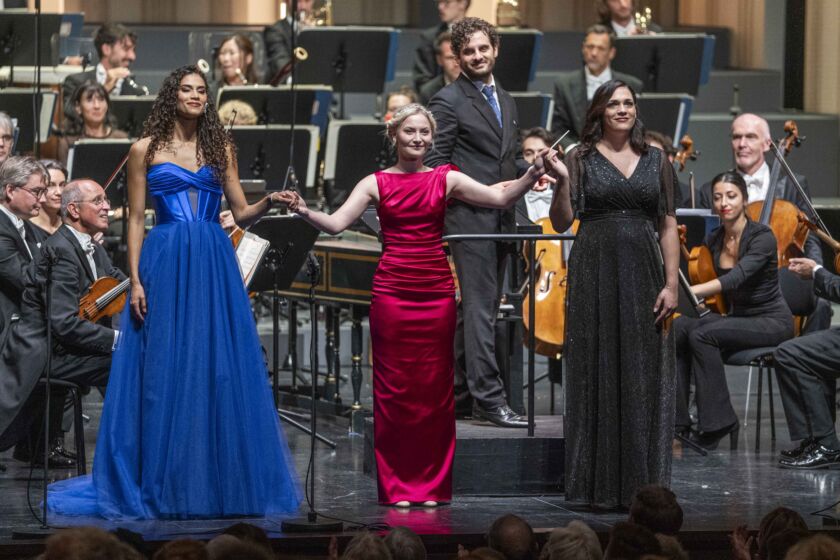Recap: Salzburg Festival 2025
Today, the 105th edition of the Salzburg Festival draws to a close.


After 174 performances on 45 days at 16 venues as well as 35 performances as part of the youth programme jung & jede*r, the Salzburg Festival’s Directorate, Kristina Hammer, Markus Hinterhäuser and Lukas Crepaz, is pleased to announce a 98,4% percentage of occupied seats. 256.600 guests from 88 countries, including 49 non-European ones, attended this year’s Festival.
43 performances of six staged, three semi-staged and three concert productions made up the opera programme; they were flanked by 90 concerts. 13 of these formed part of the series Ouverture spirituelle, this year under the motto “Fatum”. On the occasion of the 50th anniversary of his death, the Salzburg Festival dedicated a concert series to Dmitri Shostakovich; it also commemorated Pierre Boulez’ 100th birthday with a concert series. Numerous television and streaming productions as well as radio recordings took place. Via the partners of the European Broadcasting Union (EBU), the radio broadcasts and audiovisual broadcasts reached an audience of millions worldwide.
The drama programme included the revival of Jedermann directed by Robert Carsen, one world premiere, one new production, guest appearances of the Odéon-Théâtre de l´Europe and the Lucinda Childs Dance Company as well as three readings.
Of the 15 Jedermann performances, 12 took place on Cathedral Square and three at the Großes Festspielhaus. 24 August saw the 800th performance of the “play of the rich man’s dying” in Salzburg.
One world premiere and two new productions were featured in the youth programme jung & jede*r at the Schauspielhaus. The Festival mentorship programme continued successfully; furthermore, 6,000 tickets for performances in all three genres were sold at deep discounts to young persons up to the age of 27.

Benefit Dress Rehearsals – 90,000 Euros raised for charity
Thanks to the performers’ kind permission, the Salzburg Festival was able to sell tickets to the dress rehearsals of Jedermann, Die letzten Tage der Menschheit and the Mozart Matinees as benefit tickets. The Festival thereby raised 90,000 Euros for charitable causes.
50,000 Euros will be donated to the aid organization “Doctors without Borders” for independent medical aid in crisis areas around the world.
30,000 Euros will be donated to the association Hemayat. This care centre for survivors of torture and war was founded 30 years ago in Vienna and offers professional help for traumatized persons from all over the world.
For people living in poverty in Salzburg, the Virgilambulanz of the Caritas has become an important medical service provider. The Salzburg Festival already supported this initiative at its founding and will donate 10,000 Euros for lab work, medicines and wound dressings.
Thanks to Siemens, the ORF Salzburg and UNITEL, the Siemens Festival>Nights have taken place for meanwhile 24 years, the largest public screening of its kind, presenting performances using optimal daylight-compatible technology on an LED screen and a stateof-the-art sound system. Every year, art lovers from all over the world enjoy historical and current Festival performances free of charge. This summer, 48 screenings were attended by approximately 32,000 guests.
Music, drama, readings, exhibitions, dance and film – for three days, Salzburg’s citizens and guests can get into the swing of the Festival summer during the Festival Opening Party. On 18, 19 and 20 July, the event offered 79 distinct programmes in 29 locations. More than 11,300 free tickets were distributed.

Young Singers Project
14 young vocalists from nine nations participated this year in the Young Singers Project. Its public master classes – led this year by Malcolm Martineau, Julian Prégardien and Stéphanie d’Oustrac – and strong practical focus make the YSP a unique young artist programme. As every year, the Young Singers performed the children’s opera, the world premiere of Sebastian Schwab’s Musketiere!, as well as their final concert at the Haus für Mozart. Since 2008, 226 young singers from 48 countries have benefited from this career opportunity.
Honours: Festival Brooch with Rubies and Gold Festival Brooch
The Gold Festival Brooch with Rubies was presented this summer to Grigory Sokolov on the occasion of his 75th birthday, in recognition of his benchmark performances as a pianist at the Salzburg Festival since 2001.
Markus Tomasi received the Gold Festival Brooch for his 42 years of service as principal concertmaster of the Mozarteum Orchestra Salzburg during numerous performances.
The Association of Friends of the Salzburg Festival offers many artist conversations and accompanying events illuminating and responding to the content of the Festival’s programme. This year, Friends of the Festival had their choice among 83 events.
For the design of the 2025 annual programme book, the Salzburg Festival secured rights to works by Donata Wenders. Like few other artists of her time, Donata Wenders illustrates the transformation of photography as a medium in her works. From analogue film to digital photography and all the way to the development of a unique genre of photographic installations featuring short films – in Wenders’ case, the choice of medium is always a stylistic device as well. Her black and white photographs, oscillating between light and shadow, focus and blurring, established the iconography of this year’s Festival programme in an ingenious manner.

AURA – MYTH – ATTRIBUTION
A Three-Part Festival Dialogue
In 2025, the Salzburg Festival programmed a three-part symposium commemorating the years 1945 as well as 1955 and 1995, exploring the public perception of the Salzburg Festival at these significant historical turning points, and its influence on identity-generating mechanisms.
(Based on an idea by Oliver Rathkolb – concept: Oliver Rathkolb, Margarethe Lasinger, Markus Hinterhäuser, Helga Rabl-Stadler, Lydia Rathkolb; presented by the Salzburg Festival and the Festival Archive in cooperation with the Association of Friends of the Salzburg Festival, the Vienna Institute for Cultural and Contemporary History and Arts (VICCA) and the Robert-Jungk Bibliothek für Zukunftsfragen.)
Festival Exhibitions
In parallel with the Festival Symposium, an exhibition at Leopoldskron Palace presented a collection of photographic and documentary images demonstrating the influence of culture on the development of society in eventful times. From 10 to 27 August, guided tours of the exhibition were offered. This exhibition, in turn, continued in a series of posters exhibited on the bridge Marko-Feingold-Steg, focusing on iconic photographs about the Liberation and New Beginning in Salzburg 1945 · 1955.
(An initiative of the Salzburg Festival Archive; Concept: Margarethe Lasinger, Oliver Rathkolb, Gabriele Straschil. The Salzburg Festival thanks Salzburg Global, the Lee Miller Archives, the Image Archive of the National Library of Austria and the Salzburg Municipal Archive for their support.)
MARION KALTER · Pierre Boulez
Le compositeur, c’est l’œil qui imagine l’oreille
Finally, the Salzburg Festival exhibited selected photographs by Marion Kalter at the KarlBöhm-Saal at the Festspielhaus. Focusing on Pierre Boulez, to whom a concert series was dedicated this summer on the occasion of his 100th birthday, these photographs documented an era of change starting in 1989.
(Concept: Marion Kalter, Margarethe Lasinger, Johannes Steidl)
Georg Baselitz
Original Figures for Igor Stravinsky‘s L’Histoire du soldat
Festspielhaus Foyer (Haus für Mozart/Felsenreitschule)
With sets and puppets designed by Georg Baselitz and in cooperation with the Salzburg Marionette Theatre, one of the key works of musical modernism took the spotlight during the 2025 Festival summer: Igor Stravinsky’s L’Histoire du soldat. On this occasion, the Salzburg Festival cooperated with the Gallery Thaddaeus Ropac in exhibiting the original puppets created by Georg Baselitz for the production, alongside sketches and the sculpture Pace Piece (2004) inside the Festspielhaus foyer.
For the illustration of this year’s concert programme books, Constantin Luser provided shadow images of his filigree sculptures made of brass wire as well as mirror images. These delicate “drawings” created a visual counterpart for the sounds, exuding a similarly mesmerizing transcendence as musical compositions evoke. Constantin Luser received international attention during recent years for his multitude of drawings, suspended objects and interactive sonic sculptures.
In total, 78 programme books were created this Festival summer, offering 3,600 pages of introductory essays, artist biographies and background information on the staged productions and concerts. In addition, a dozen digital booklets of libretti (in the original language and German translation) were published, alongside booklets on the exhibition projects in German and English.
